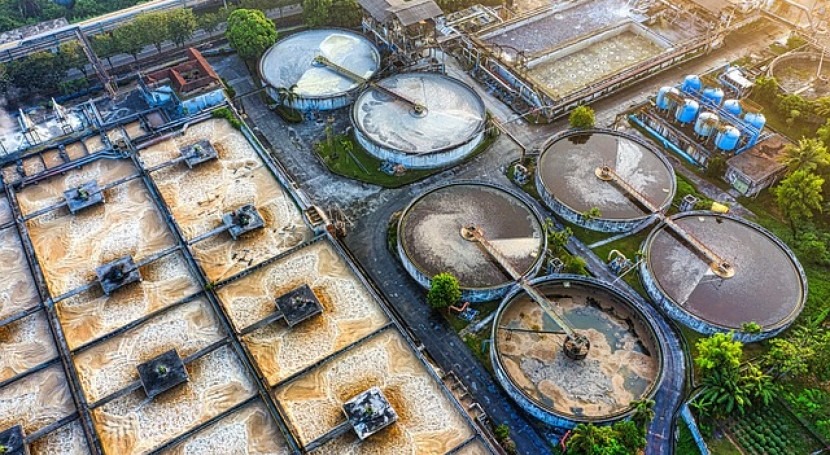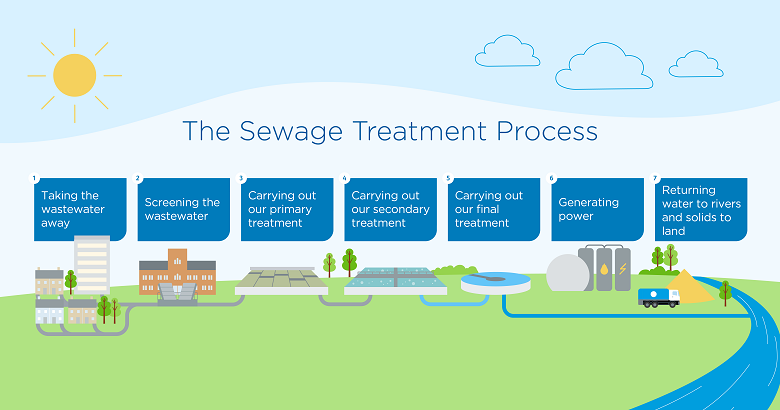Key Obstacles in Urban Waste Water Treatment Approaches
Key Obstacles in Urban Waste Water Treatment Approaches
Blog Article
Strategic Approaches to Enhance Waste Water Treatment Effectiveness and Minimize Environmental Effect
In the realm of waste water therapy, the pursuit for enhanced efficiency and lowered environmental effect is a continuous obstacle that demands calculated solutions. As society grapples with the essential to handle water resources sustainably, a nuanced technique comes to be important. The combination of sophisticated treatment innovations, energy-efficient procedures, source healing methods, boosted nutrient elimination techniques, and smart monitoring and control systems represents a diverse framework for attending to these pressing worries. Nonetheless, what exists at the core of this complex web of methods is the prospective to transform the way we come close to waste water treatment, not just as a process of disposal, however as a useful chance for innovation and environmental stewardship.
Advanced Treatment Technologies
Cutting-edge membrane filtration systems have actually transformed innovative wastewater treatment processes, significantly boosting the elimination of contaminants. These ingenious systems function forcibly water with a semi-permeable membrane, efficiently separating impurities from the water stream. The membrane layer's tiny pores trap contaminants such as germs, infections, and suspended solids, enabling just detoxified water to go through. This innovation has shown to be extremely reliable in removing a wide variety of impurities, consisting of drugs, heavy metals, and natural substances, which are commonly testing to eliminate through conventional therapy approaches.
Furthermore, membrane layer filtering systems use many advantages over traditional treatment techniques. They need less space, generate higher-quality effluent, and are extra resistant to variations in influent water top quality. Furthermore, these systems are extremely versatile and can be conveniently incorporated right into existing therapy plants or utilized as standalone units for decentralized applications. As the need for tidy water proceeds to rise, the fostering of innovative membrane purification technologies is vital to ensure lasting and effective wastewater therapy practices.
Energy-Efficient Processes
The integration of energy-efficient procedures in wastewater treatment systems is critical for optimizing resource usage and minimizing functional prices. One key method to improving power effectiveness in wastewater therapy is the application of advanced aeration systems, such as fine bubble diffusers or surface aerators, which can boost oxygen transfer efficiency and decrease energy consumption.
Additionally, enhancing procedure control and automation with using innovative sensing units and keeping an eye on systems can enhance general power performance by readjusting operations in real-time based upon real need and problems. Applying power audits and on a regular basis checking power efficiency signs are necessary techniques to recognize locations for enhancement and track energy-saving efforts efficiently. In general, the adoption of energy-efficient processes in wastewater treatment not just profits the setting but also adds to lasting expense savings and operational sustainability.
Resource Recovery Approaches
With a concentrate on enhancing resource usage and sustainability in wastewater treatment systems, the implementation of source healing strategies arises as a pivotal facet in improving operational performance. Resource recovery strategies in wastewater therapy include the identification and removal of important sources from the waste stream, therefore turning what was as soon as taken into consideration waste into an important possession. By applying resource recuperation methods such as nutrient elimination and why not try here healing, energy generation from organic matter, and the production of multiple-use water, wastewater treatment plants can reduce ecological effect while taking full advantage of effectiveness.

Enhanced Nutrient Elimination Methods
Implementing advanced nutrient removal methods is crucial for maximizing the effectiveness of wastewater treatment systems. Enhanced nutrient removal plays an important function in reducing the environmental influence of cured effluent released right into water bodies. One of the key strategies made use of for improved nutrient removal is the procedure of organic nutrient removal (BNR), which includes the elimination of nitrogen and phosphorus via biological procedures. This can be attained through the use of specialized bacteria that can convert nitrogen substances into inert nitrogen gas via denitrification, site link and collect phosphorus within their cells with a procedure called improved organic phosphorus removal (EBPR)

In addition to BNR, advanced treatment methods such as membrane bioreactors (MBRs) and constructed marshes can also be used to boost nutrient elimination performance. By including these innovative nutrient elimination techniques into wastewater treatment industries, systems and towns can successfully minimize nutrient contamination and safeguard the environment.
Smart Monitoring and Control Equipment
Using sophisticated technology, the assimilation of wise tracking and control systems transforms the functional performance of wastewater treatment facilities. These systems include sophisticated sensors and information analytics to constantly keep track of key criteria such as pH degrees, turbidity, dissolved oxygen, and circulation rates in real-time. By accumulating and assessing this information, operators can obtain useful understandings into the efficiency of the therapy processes, enabling positive modifications to maximize therapy effectiveness.
Smart tracking and control systems also sustain remote monitoring abilities, permitting operators to accessibility real-time data and control functions from off-site areas. This remote availability boosts functional adaptability and responsiveness, making it possible for swift treatments in situation of system malfunctions or changes in influent high quality. Furthermore, the anticipating upkeep capacities of these systems aid avoid equipment failures and decrease downtime, inevitably boosting the overall dependability of wastewater therapy operations (Waste Water Treatment).
Final Thought
In conclusion, calculated strategies such as sophisticated therapy technologies, energy-efficient procedures, source recovery approaches, enhanced nutrient removal methods, and wise monitoring and control systems play a critical role in enhancing wastewater therapy efficiency and reducing ecological effect. By carrying out these techniques, wastewater treatment plants can improve their total efficiency, reduce energy consumption, recoup valuable resources, and make sure compliance with environmental laws. These approaches are necessary for sustainable and reliable wastewater monitoring practices.

In conclusion, critical techniques such as sophisticated treatment modern technologies, energy-efficient processes, source healing techniques, improved nutrient removal strategies, and wise tracking and control systems play an essential duty in boosting wastewater therapy performance and lessening ecological influence.
Report this page